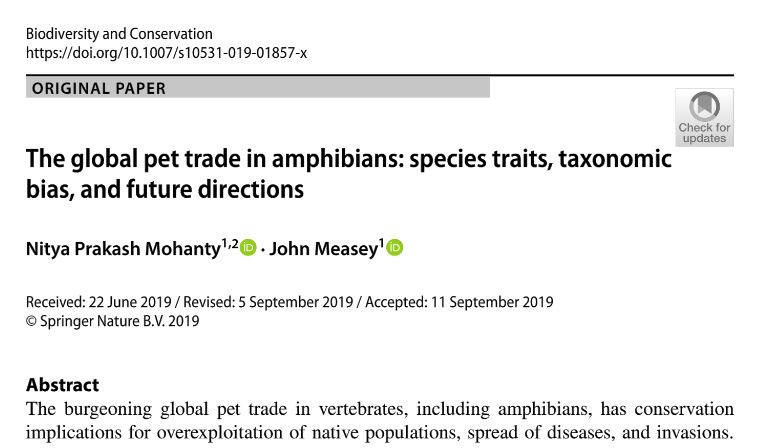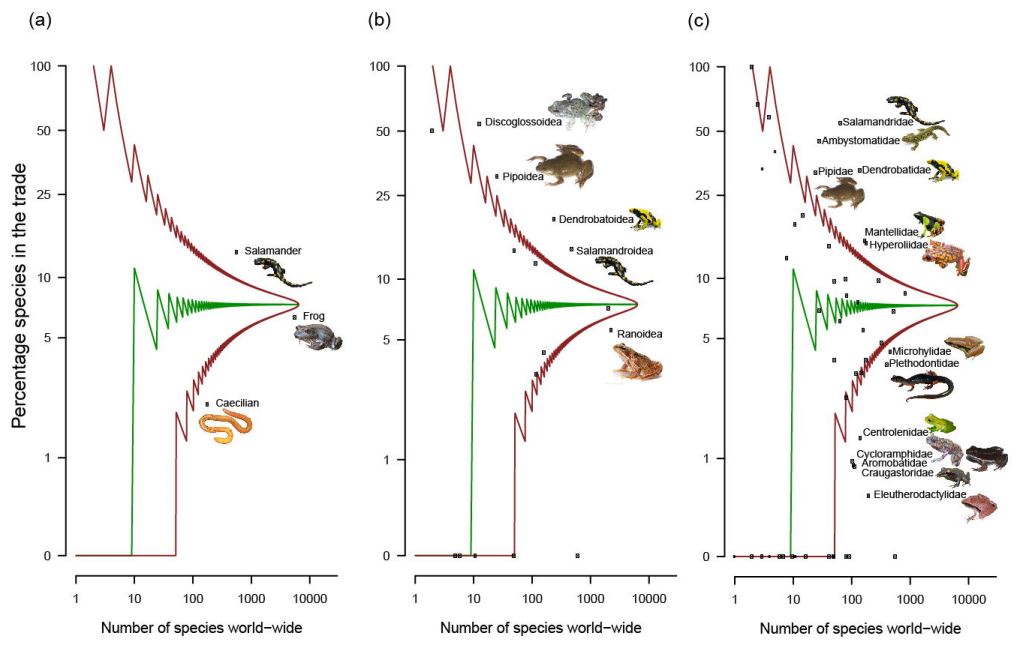Predicting the amphibian pet trade
The continued increase in numbers of live amphibians traded as pets has resulted in a number of problems for the individuals traded and the remnants of populations left behind. Not only are numbers of individuals increasing, but the pet trade is constantly looking for new species to trade that will keep shoppers coming back to their outlets: now not only physical shops but also online stores. Predicting what will be traded in the future is difficult, because predicting the future is confounded by ignorance of what will happen. But if we could determine what is likely to be traded, we might be able to set in place measures that stop the most vulnerable or most invasive species from becoming tomorrow’s problems.
This is the premise that Nitya Mohanty and I started with when we set out to determine what the most popular traits in the current pet trade are for amphibians. We searched the literature for lists of traded amphibians around the globe and used the assembled list to test for traits that set these species apart from other non-traded amphibians. To do this, we used a published dataset of amphibian traits called AmphiBIO, although this did limit us to traits that they had used and recorded in adequate numbers.
The result of our endeavours a long list (443) of traded species, which we were able to test for taxonomic biases, finding that there are indeed biases including 6 overtraded families. Next we found that the species traded tend to be larger, with bigger range sizes, and a ‘larval’ breeding type. Lastly, we used these traits to make a list of which species have these traits but are not in our list. This is a list of what might be likely to be traded in future.
Although we just conducted this work on amphibians, a similar approach could be taken for other popular groups that are often traded as pets, such as reptiles or birds. We also acknowledge that there are many more traits that are likely to make popular pets, such as colour and calls. Using this predictive framework would allow policy makers to decide whether or not to control the potential for future species to be traded, getting one step ahead of the unpredictable trade in pets.
Keen readers of the blog will remember that Nitya heard that this paper was accepted only minutes before he was due to present on it at the recent HAA meeting in Cape St Francis (see blog post here). And those of you with longer memories will realise that this is not the first time we have published on amphibians in the pet trade as there was a MeaseyLab publication on amphibians in YouTube videos (see here for the blog post & here to read that paper).
Mohanty, N.P. & Measey, J. (in press) The global pet trade in amphibians: species traits, taxonomic bias, and future directions. Biodiversity & Conservation. DOI: 10.1007/s10531-019-01857-x


